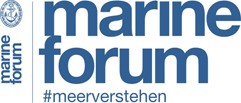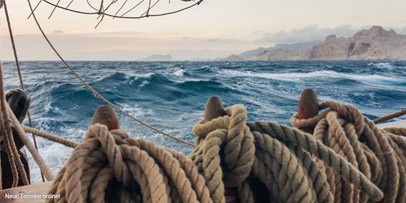From a report in the Neue Züricher Zeitung
Brown bales have been washing up on the beaches of Brazil's north-east for years. Initially referred to as "mysterious boxes", they now number several hundred, are the size of toolboxes, overgrown with all kinds of sea creatures and weigh between 80 and 200 kilograms. Now such finds have also been made on the beaches in the far south of Brazil near Sao Paulo.
Raw rubber from the Far East
Marine biologists at Labomar (Marine Science Institute - Federal University of Ceara) trace the origin of these parcels of raw rubber back to German blockade runners who, during the Second World War, transported the material, which was important for the war economy, from the ally Japan from East Asia across the South Atlantic to Bordeaux. The rubber bales (crude rubber in bales) Some still bear the imprint "Product of French Indochina" or Japanese characters, as the former French colony on the territory of Laos, Cambodia and Vietnam was occupied by Japan at the time. The raw rubber was mainly used to make tyres, insulation material and even uniform parts.
Blockade breaker
At the time, Germany deployed a good thirty old cargo ships as blockade runners to ensure the supply of rubber despite Allied efforts. However, only some of the ships managed the weeks-long voyage through the overwhelming control of the US Air Force in the Atlantic, meaning that naval submarines were also deployed in the final months of the war.
Wrecks as sources
The finds are said to come from two ships in particular: The blockade runners MV "Weserland" and MV "Rio Grande" were tracked down and sunk a short distance apart in the South Atlantic between the Brazilian and Angolan coasts in the first days of January 1944. Using hydrodynamic simulation models, Brazilian researchers calculated that the bales found in 2018 must have come from the "Rio Grande", one of the deepest wrecks ever located, lying a thousand kilometres off Recife at a depth of 6,000 metres in the Atlantic Trench. According to the quantity, later finds had to come from a different source - the MV "Weserland" had been sunk by an American cruiser two days before the "Rio Grande" about 1000 nautical miles west of St Helena. Incidentally, a similar find was also reported in 2015 - but from southern Brittany, on a beach directly in front of the entrance to Lorient!
Valuable freight
The MV "Weserland" is also said to have been carrying other cargo, such as tin and cobalt. It is entirely possible that treasure hunters and wreck robbers could have set about salvaging this cargo - and thus also released the rubber blocks. However, it is more likely that the natural corrosion process caused the release.
Coveted pieces
There are already buyers for the disturbing rubber blocks: marine museums in Brazil - but also worldwide - are said to be interested in the artefacts.
Source: Neue Züricher Zeitung, Deutsche Welle, France Bleu, Labomar UFC












0 Kommentare